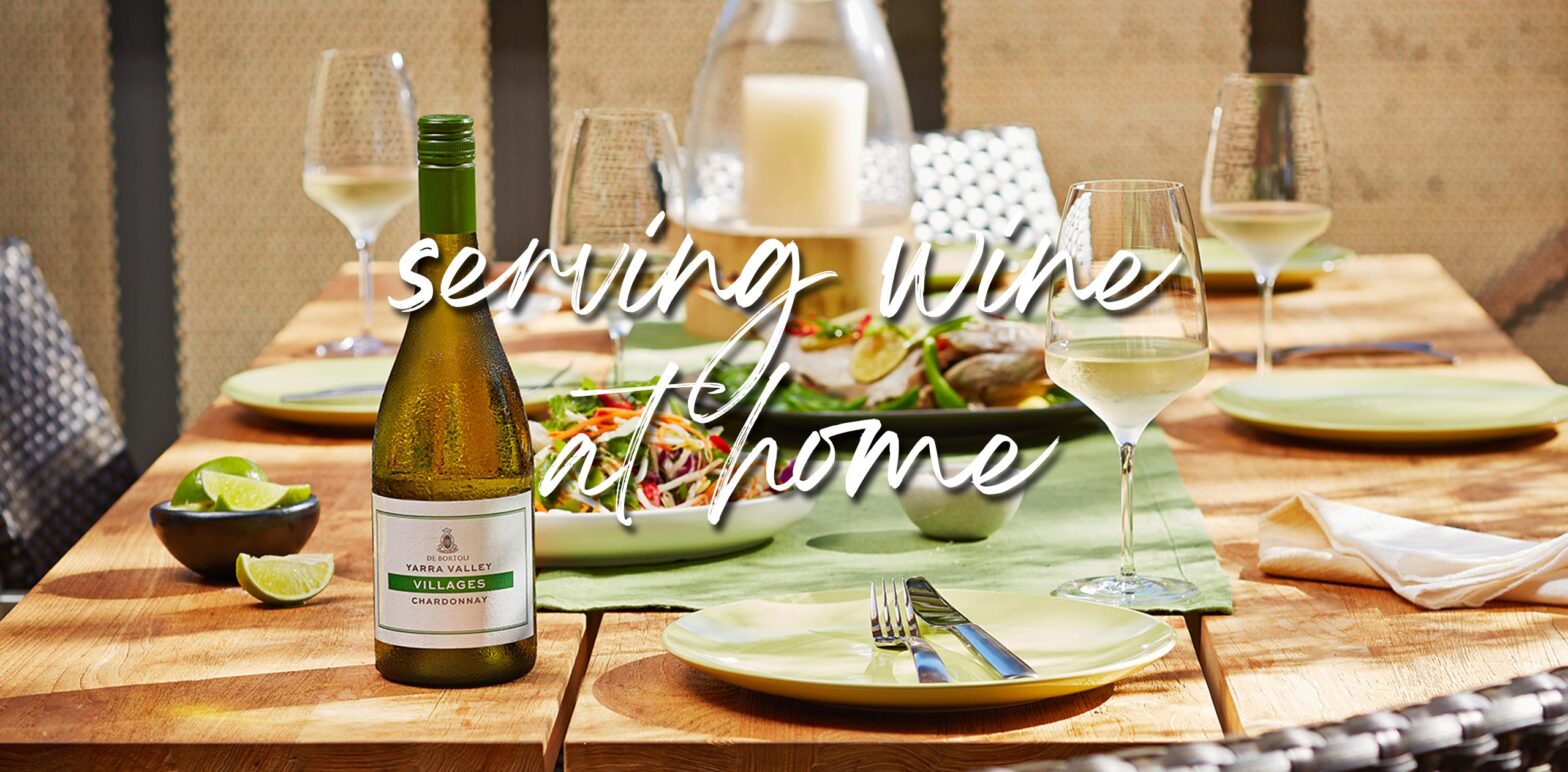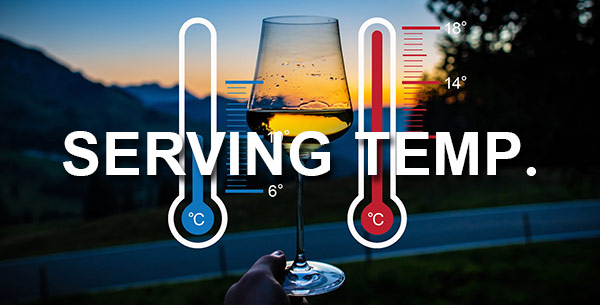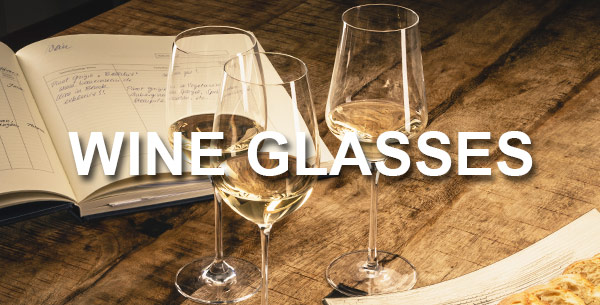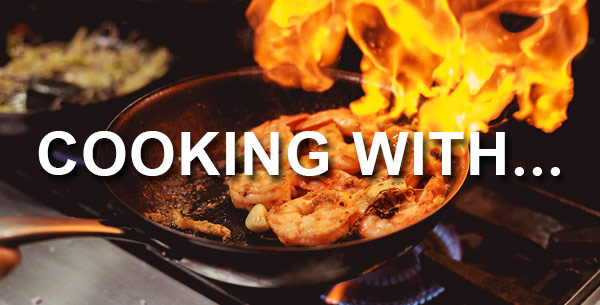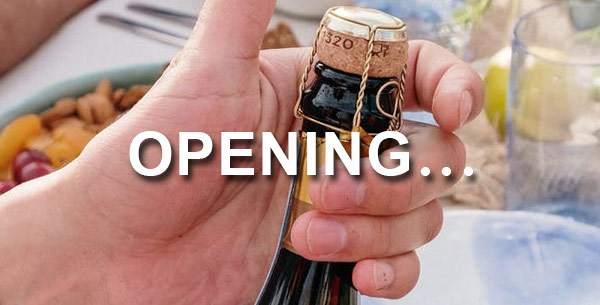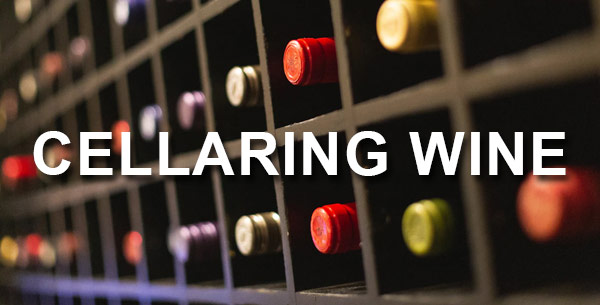Serving wine at home: Having chosen your wine, whether it is for an important dinner-party, friends coming around for a bbq or simply self-indulgence, correctly serving your wine, can greatly enhance its enjoyment.
• Serving Temperature:
This is perhaps the most important aspect of serving wine - as it can greatly affect the aroma and taste of the wine. White wines benefit from gentle chilling - but if left in the fridge overnight, this will chill the wine to around 4-5°C, enough to mask many of the aromas and flavours. Most still white wines should be served between 8°- 10°C to better showcase their personality. If a wine needs to be chilled quickly, an ice-bucket, filled with 2-3 inches of ice and salted water is more effective than submerging the whole base of a warm bottle into a container full of ice cubes. NB: If you are chilling wine outside for a long period (summer family bbq etc...) in large ice-bins, place the bottles upside down (neck first into the ice, with wine labels showing) - as the neck foil and screw caps are water proof - the labels are not and over a long period of time they will damage or worse fall off.
The term 'room temperature' for red wines can be very misleading and in most cases is too warm (especially in summer). Most red wines are best served at a temperature around 15°- 17°C to express their unique flavours and lift the natural aromas - (serve full-bodied, rich red wines at 17°- 18°C). If a red wine is very cold try pouring into a warm decanter or pouring into warm glasses. Some lighter, fruity red wines can benefit from light cooling to around 13°- 14°C - (e.g. a red Beaujolais, Valpolicella), especially for summer drinking.
• Opening a Wine Bottle:
Remove the metal or plastic foil using a sharp knife or special foil cutter ensuring that no jagged edges remain on the pouring surface - this can cause unsightly dribbling. Most modern corkscrews are effective but invariably an old or weak cork may break or disintegrate. If the cork proves difficult to remove try carefully pushing it into the bottle and pour the wine into a decanter using a skewer or kebab stick to hold it down. If there are bits of cork in the wine, filter it through a small kitchen sieve - (for very fine particles use coffee filter-paper).
With Screw-cap closures check that the top is not dented on the edge or that the cap is loose before cracking the seal - as the closure maybe faulty and allowed air to spoil your wine. Be especially careful with Champagne/ Sparkling Wine as the corks can eject with tremendous force and cause injury. Always open at an slight angle away from you (plus away from your guests and best china). Release the restraining wire and use the wire to hold onto the cork while twisting the bottle from the base. As the cork is released, angle it out of the neck to release the CO2 gas 'softly'. Formula 1 racing car drivers please take note - you will enjoy a lot more of your wine.
• Decanting:
During my 30+ years in the wine industry - I have found virtually all quality red wines benefit from decanting. Not just those specific styles of wine known to deposit sediment such as Vintage Port, or very old red wines. Decanting for varied lengths of time - can help a wine to breathe, integrate and even soften. When decanting, the wine should be poured slowly and steadily into a clean glass vessel or better still an Eisch Decanter. Using a candle or bright light will show the sediment as it gathers in the shoulder of the wine bottle - (try your best to stop pouring before the sediment reaches the neck of the bottle) - if you really want to enjoy the very last drop from the bottle - pour through espresso-coffee filter-paper. Decanting most young red wine for 20-30 minutes will be very beneficial, aged, older wines will be given a needed kiss of life, whereas bold, rich, complex, tannic red wines might need longer.
NB: All of my red wine reviews come with a suggested decanting period. *(more information on Decanting below)
• Wine Glasses:
Ideally for light, aromatic white wines, a slightly restrained-narrow shaped glass with a reserved bowl size and a gently tapering top will best express the subtle, more delicate characters in the wine. Though a wider fuller bowl is more ideal for an fuller, oaked Chardonnay and a taller glass with a wide bowl and opening is ideal for most generous red wines (more details at the bottom of page). A long/tall stem allows for ease of swirling the wine and the glass shape will be designed to retain and deliver the wines aromas.
Holding the glass by the stem minimises temperature change from your hand and avoids unsightly finger marks on chilled white or sparkling wine glasses. It also aids in seeing the full colour of the wine which can give you clues to the style of wine and the enjoyment soon to be had - and even more of the wines characters are appreciated when paired with complementary cuisine.
• Pouring Wine:
Never fill the wine glass to the top. Pouring to the halfway point is fine or better still - pour to the widest part of the wine glass (as shown below). It may look mean but you can pour as often as your guests require. It allows the wine to breathe in the glass and for the recipient to swirl the wine 'of they like' and fully enjoy the aromas.
As a general rule serve white wine before red, softer, younger/fresher style wines before more intense, richer more complex wines. If you are serving very old, fragile aged red wines - possibly serve these before much younger, fruit driven, bold-intense and higher alcohol styles wines, as they can mask the more subtle notes if enjoyed first.
After you finish pouring the wine into each glass - tilt the tip of the bottle upwards so that the wine stops flowing and while leaving the tip of the bottle over the glass - slightly rotate/ twist your hand, so if the bottle does drip wine, it falls into the glass and not onto the table cloth or worse on their lap.
Wine is at its best when it is: sipped, savoured and shared with good food and friends. Remember not to get too serious - and enjoy each wine on its own merits - cheers.

